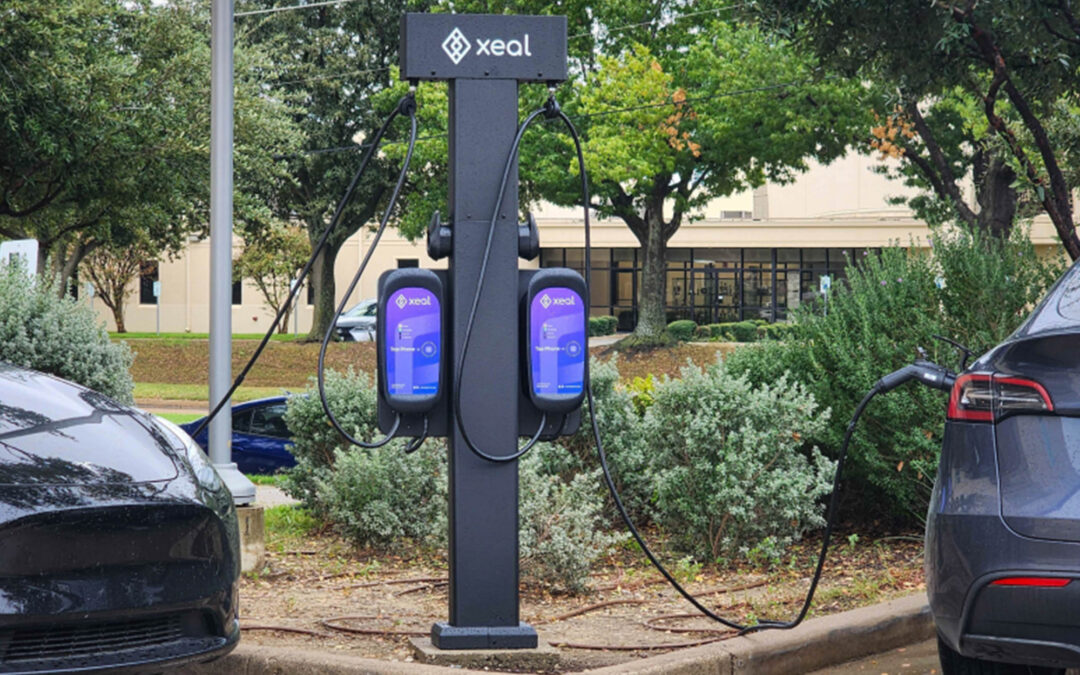Property managers and owners need to install EV charging stations to meet the needs of their tenants and remain competitive in the market. However, setting up EV charging stations at multi-family properties comes with a unique set of challenges. In this guide, we will explore the benefits of installing EV chargers at multi-family properties, the challenges property managers face, and the solutions available to address this evolving need.
The Growing Need for Multi-Family EV Charging Infrastructure
With electric vehicles gaining traction worldwide, multi-family residential complexes are under pressure to provide access to charging infrastructure for current and prospective tenants. According to industry trends, EV sales are expected to rise exponentially in the coming years. As more people choose to go electric, the need for readily available charging stations will also increase.
4 Reasons To Install Multi-Family EV Chargers
Installing EV charging stations benefits property owners, tenants, and the environment.
- Attract and Retain Tenants: As more residents switch to EVs, properties with accessible charging stations will have a competitive edge. Tenants may even prioritize properties with these amenities, making it easier to attract new renters or buyers and retain existing ones.
- Environmental Responsibility: Installing EV chargers shows a commitment to sustainability and environmental responsibility, which can enhance a property’s image and marketability.
- Future-Proofing: As regulations and consumer preferences shift towards greener technologies, properties equipped with EV infrastructure will be better prepared for future demands and may even avoid costly retrofits.
- Increase Property Value: EV charging stations are seen as a premium amenity. Installing these stations could potentially increase the property’s value and appeal to eco-conscious residents.
Challenges of Multi-Family EV Charging
Despite the clear benefits, property managers face several challenges when considering EV charging at multi-family residences. From financial considerations to logistical constraints, providing adequate EV infrastructure requires careful planning and strategic solutions.
Limited Parking Space and Layout Issues
One of the primary challenges is finding space to install EV chargers, especially in older apartment complexes with limited parking. Many multi-family properties were designed long before EVs became common, and the existing parking layouts may not easily accommodate charging stations.
Solutions
- Dedicated EV Charging Zones: Property managers may need to designate specific parking spots for EV charging, often near electrical sources or in easily accessible areas.
- Shared Charging Stations: For properties with limited parking, shared EV chargers can allow multiple tenants to access charging on a rotating or scheduled basis. Smart chargers can even track usage and notify residents when stations become available
High Upfront Costs
The cost of installing EV chargers is one of the biggest hurdles for multi-family property owners. In addition to the charging stations’ cost, installation may require electrical upgrades, permits, and infrastructure changes, all of which can add up quickly.
Solutions
- Incentives and Rebates: Many governments and utility companies offer incentives, rebates, or grants to help offset the costs of EV charger installation. Property managers should explore local and federal programs to reduce their financial burden.
- Tenant Contribution Models: Some property managers pass on part of the installation cost to tenants who use the chargers. Tenants may pay a higher rent or service fee to access the charging infrastructure.
Electricity Demand and Power Availability
Charging multiple EVs at the same time requires a considerable amount of electricity, which may not be feasible for older buildings with outdated electrical systems.
Solutions
- Load Management Systems: Smart EV chargers can be equipped with load management software to ensure electricity is efficiently distributed. This helps avoid overloading the electrical system and allows multiple vehicles to charge at once without major upgrades.
- Phased Installation: Property managers can start with a small number of chargers instead of installing a full-scale charging system at once and gradually increase the number as demand grows. This can help balance electricity usage and costs.
Maintenance and Monitoring
Ongoing maintenance and management of EV chargers are essential to ensure reliability, but they can be complex tasks. Property managers may not have the resources or expertise to regularly monitor and repair charging stations.
Solutions
- Partner with Charging Providers: Many EV charging service providers offer maintenance packages that include regular monitoring, software updates, and troubleshooting. Partnering with a provider ensures the stations are always functioning, and tenants can count on their availability.
- Smart Charging Systems: Advanced charging stations often come with remote monitoring capabilities, allowing property managers or third-party companies to monitor charger status, perform software updates, and address issues without the need for on-site visits.
Lonestar Integrated Solutions is proud to partner with Xeal for the best multi-family EV charging infrastructure. We will assist every stage of infrastructure installation.
Key Considerations for Multi-Family EV Charging Installations
To overcome these challenges, property managers need to consider a range of factors before moving forward with the installation of EV chargers. Understanding and aligning the technical requirements with the property’s capacity will ensure a smooth and efficient installation process.
Evaluate the Property’s Electrical Capacity
Before any installation can occur, property managers need to assess the building’s electrical system to determine if it can handle the added load from EV chargers. This may require consulting with an electrician or an energy consultant to identify potential limitations and whether electrical upgrades will be needed.
Determine Charging Needs
Understanding the number of residents who own or plan to own EVs is critical in determining the number of chargers required. Property managers should survey their tenants to gauge interest and future demand, which will guide decisions on the number and type of chargers to install.
Charger Placement
Another important consideration is where to install EV chargers. Ideally, charging stations should be installed in convenient locations that are accessible to residents but also close to existing electrical infrastructure to reduce installation costs. Ensuring chargers are in well-lit, secure areas enhances their appeal and usability.
Choose the Right Charger
Not all EV chargers are created equal. Level 2 chargers, for instance, are the most common type installed in multi-family properties due to their faster charging capabilities than Level 1 chargers. However, even among Level 2 chargers, there are variations in speed, cost, and features. Property managers should weigh the benefits of each model, considering factors like charging speed, smart capabilities, and cost-effectiveness.
Lonestar Integrated Solutions is Here To Plan Your Xeal Charging Infrastructure Installations Today
At Lonestar, we’re ready to help you plan your Xeal charging infrastructure installation. We work closely with you to plan, design, and optimize EV charging solutions that meet your property’s unique needs, ensuring efficiency and reliability for your multi-family or commercial project. Let’s get started today!

